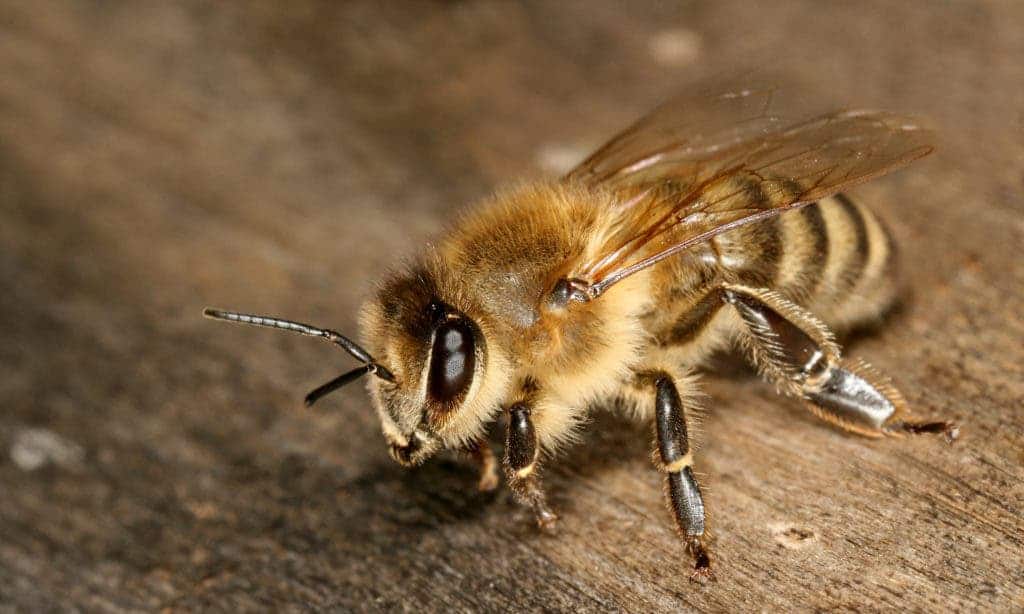When given the choice, bees tend to opt for blossoms in the rural areas, forgoing those in urban sites.
A team from Ohio State University positioned several honey bee colonies in a central Ohio cemetery smack in the middle of where urban residential development transitions into farmland. They were careful to place the hives in an area that would make it equally accessible for both urban and rural plants and then, they simply left the bees on their own, to fend for themselves, studying which flowers the bees opted for.
The bees always seemed to prefer the rural flowers and at one point, flowers opted for rural polen 96% of the time. Rather interestingly, they did so regardless of the flower diversity that was presented to them.
“Honey bees didn’t seem to care that much what the floral diversity was. What they wanted was large patches of their favorite stuff,” said Sponsler, who now works at Penn State University.
What’s interesting about this study is that it challenges the classic belief that farmlands don’t do anything to help the bees. While the agricultural plants themselves are of no interest to bees, the countryside generally features wide swaths of unmowed wild plants (which we commonly know as weeds) on the side of fields and roads. These weeds can feed the bees much better than urban options — at least that’s what the bees themselves seem to think.
“When the bees have a choice, they go to the farmland. We’ve had trouble keeping our urban colonies alive, so this makes a lot of sense to us,” Johnson said. There’s this popular perception that urban places are better for bees because of the diversity of plants. This is showing that, at least in Ohio, the agricultural areas are actually superior and that’s despite the pesticide use that’s out there,” he said.”Apparently, farmland isn’t desolate at all — at least not for honey bees.”

Goldenrod, often regarded as a common weed, can be a trove of nectar for honeybees. Image credits: Rooster613 / Wikipedia.
In order to reach this conclusion, researchers first tracked the tell-tale dance patterns of bees returning from foraging. These dances can give a good indication of the direction in which the bees were foraging, as well as the distance from the hive. In other words, you can get a pretty good idea where the bee was foraging without actually following it.
“These things can be pretty easily decoded by the human observer, thankfully. You can map the locations that are being referred to in the dance,” Sponsler said.
Secondly, they carried out a more direct analysis. Namely, they looked through the bees’ collection. Whenever the bees would return from some scouting or foraging, they would walk through a screen that allowed their body to pass through but scraped some of the pollen. The researchers carefully collected this pollen and analyzed it to see what plant it comes from. As it turns out, Goldenrod was the most popular plant in the area – again, a plant that commonly grows on wild fields or on the side of the road.
The research offers some valuable indication for urban bee growers. Bee populations worldwide are dwindling, and especially in urban areas, the insects are highly threatened. The takeaway is pretty simple: if you want to keep a healthy beehive, you should supplement their diet. Planting certain trees, for instance, can produce very high amounts of nectar, as can flowers. After all, there’s no reason why we shouldn’t have some flowers on our fields, is there?
“There’s no reason why our urban landscapes cannot be full of flowers. It’s just that we’ve inherited a certain preference toward things that look like golf courses rather than things that look like prairies.”
Journal Reference: Douglas B. Sponsler, Emma G. Matcham, Chia-Hua Lin, Jessie L. Lanterman, Reed M. Johnson. Spatial and taxonomic patterns of honey bee foraging: A choice test between urban and agricultural landscapes. Journal of Urban Ecology, 2017; 3 (1) DOI: 10.1093/jue/juw008










